Less is better or return of mini-shuttles

Space size matters. Too large rocket or ship will be difficult to transport and expensive to maintain, and too small will bring into space too light a payload. For example, for launch vehicles, the most common diameter of the stage is within 2-4 meters, and the starting mass in most cases ranges from 200-800 tons. After a couple of centuries, it will be easy to build the prevalence curves for different sizes of winged reusable ships. In the meantime, we have a failed project of a large shuttle and many mini-shuttle projects. In the second half of the 20th century there were several projects of small winged orbital ships, one of which even flew outside the atmosphere. Now one mini-shuttle has been performing secret missions for several years, and in several countries work is underway on similar reusable ships. What are these devices?
Not a mini-shuttle at all
Starting to talk about reusable winged ships, you must first decide what to include and what to exclude from the list. There were a lot of reusable vehicles with wings, and their unrealized projects were even more. And, for example, X-15 and SpaceShipOne reached the conditional boundary of space at 100 km. But they were not constructively designed for orbital flight. And further will be considered only devices, at least theoretically capable of going into orbit and return. Also, given the abundance of projects that were not implemented in the metal, not all of them are on the list.

Late versions of the X-15 could go up to 100 km and even carried a heat shield, but could not go into orbit.
')
X-20
Even before the war, in 1934, the Austrian physicist Eigen Senger proposed the project of a long-range missile bomber. After the occupation of Austria, the project began to be developed in Nazi Germany, but was closed in 1941, as not promising quick returns. In 1944, when only a miracle could save Germany from defeat, the project was resumed, but, of course, they did not have time to do anything. Post-war calculations show that, in its initial form, the project was in principle unrealizable, because in it the heating from movement in the atmosphere was very much underestimated. But the idea of an orbital bomber became known both in the USSR and in the USA. And after the launch of the first satellite by the Soviet Union, the Americans were very scared. And already on October 24, 1957, combining several separate developments, the X-20 Dyna-Soar program was launched (from the words Dynamic Soarer - a dynamic glider, in English sounds the same as a dinosaur). Its result was to be an orbital plane, which could serve as a scout, bomber, explorer and fighter of enemy satellites.
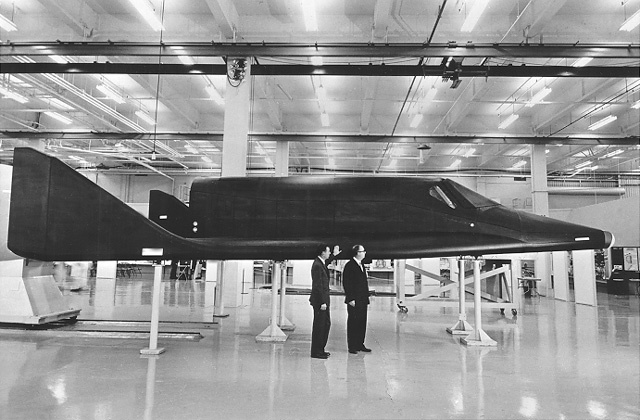
Full-size model X-20
Depending on the mission, the X-20 could launch on a Titan-II or Titan-III booster. In the first case, the device went out onto a suborbital trajectory, dived into the atmosphere, dropping to an altitude of 40-60 km, photographed a target or dropped an atomic bomb on it, and, on the lifting force from the wings, returned back to space. The suborbital trajectory meant that the vehicle was flying, bouncing off the atmosphere, like a flat stone from water, and had to land on the first orbit. The Titan-III, a load-lifting booster rocket, allowed the X-20 to be launched into orbit. It is curious that in this case, too, a dive into the atmosphere was considered possible, but for the case of a “race” for the enemy’s maneuvering satellite. X-20 due to the wings could change the inclination of the orbit more than any wingless satellite. In addition, in the version with the Titan-III, the X-20 went into orbit docked with the TransStage booster block and had ample opportunities for maneuvering due to the large amount of fuel.
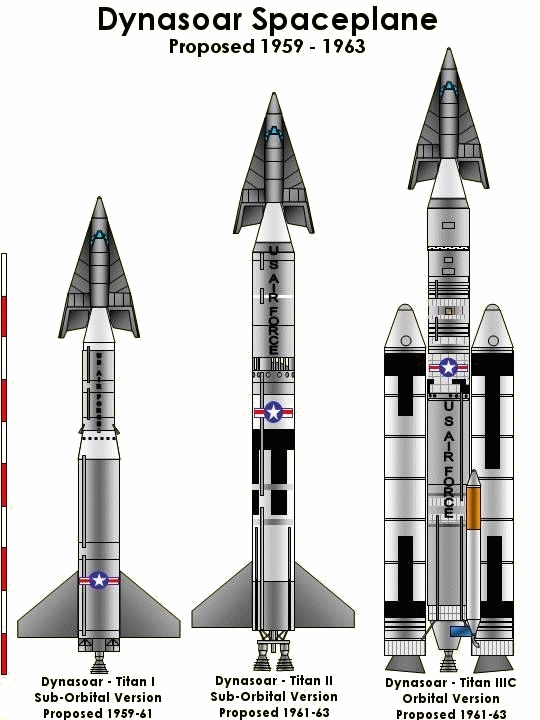
The first Titan-I X-20 rocket on the left no longer fit in 1961.
The heat protection of the device was very interesting. The X-20 did not carry a one-time ablative heat shield evaporating from heat, and ceramic insulation, like that of the Space Shuttle and Buran, was not yet known. Therefore, refractory materials and alloys — molybdenum, zirconium, and Rene-41 alloy — were to be used on the X-20. When braking in the atmosphere, the heat shield heated up and began to glow, emitting heat by radiation. Because of this, for example, the ship did not have a chassis - the tires would not have sustained such heating, and a separate cooled compartment was a luxury. Therefore, the X-20 on the project were refractory metal skis. The glass also could not withstand the heat, so the front window was closed with a metal shutter, which should have been dropped only before landing. And in flight, the pilot could look in the side windows.
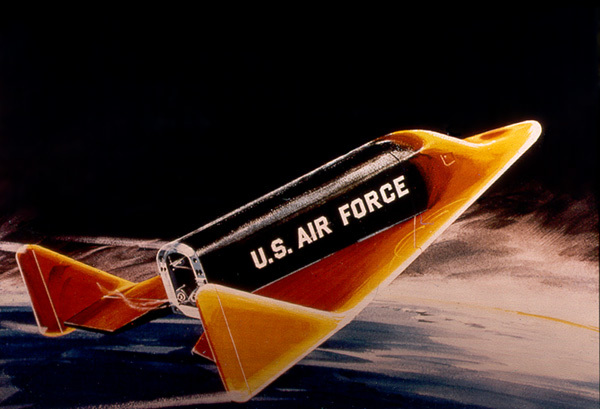
In 1962, the project was officially presented to the public. Perhaps that is why he is so famous, despite the fact that not a single flight under the program was made. Confidence in success was so great that even scored seven pilots. The list included the future commander of the Apollo 11, Neil Armstrong, who had time to leave as many as two programs - X-15 and X-20. In 1963, the willful decision of the Secretary of State for National Security Robert McNamara closed the project in favor of the civilian Gemini program (was very successful) and the military project of the MOL space station (later also closed).
Spiral, BOR and EPOS
In 1965, an ambitious program to create a reusable system was launched in the USSR, in which the first stage was a hypersonic plane-propeller, and the second and third - an orbiter with an accelerating unit. The upper-stage aircraft had to rise to an altitude of 30 km and accelerate to 6 speeds of sound, and the orbiter then went into orbit at a disposable rocket stage.
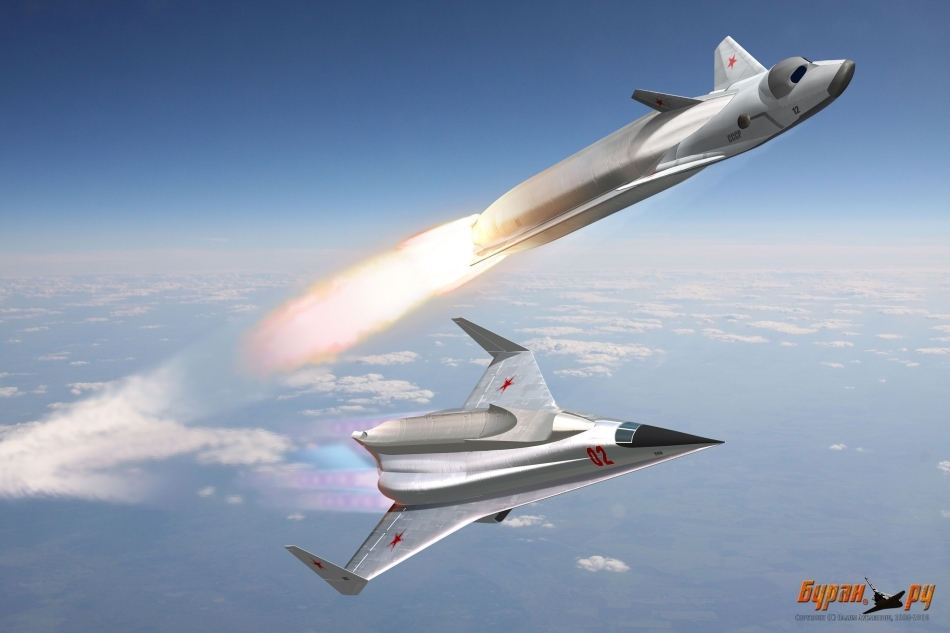
Moment of separation
And if the work on the upper-stage aircraft was going slowly - this is a very difficult thing, hypersonic engines, then tests of the orbiter called BOR (Unmanned Orbital Rocket Plane) began as early as 1969. In the first launch, on July 15, the device was launched without thermal protection. Naturally, it burned down, but by telemetry information was obtained about the success of the controlled descent at an altitude of 60-70 km. In the second launch, on December 6, the device successfully braked about the atmosphere, but due to the failure of the control system it spun, the parachutes could not open properly, and BOR crashed. After that, five more launches took place, of which only in one case the device did not go into orbit due to the destruction of the fairing on the launch vehicle. In the remaining four launches, we tested a heat-resistant niobium panel, checked different angles of attack, and even if the unit eventually crashed, each launch brought important and interesting data.

In 1966, a special cosmonaut detachment was formed under the direction of cosmonaut No. 2 German Titov, which performed flights on an analogue that received the MiG-105 index (first flight October 11, 1976):

In the 1980s, tests of the BOR-4 apparatus began, at which heat protection for the Buran was tested. Five successful flights took place, of which one is suborbital on a simplified vehicle. The program is now called EPOS (Experimental Manned Orbital Plane).
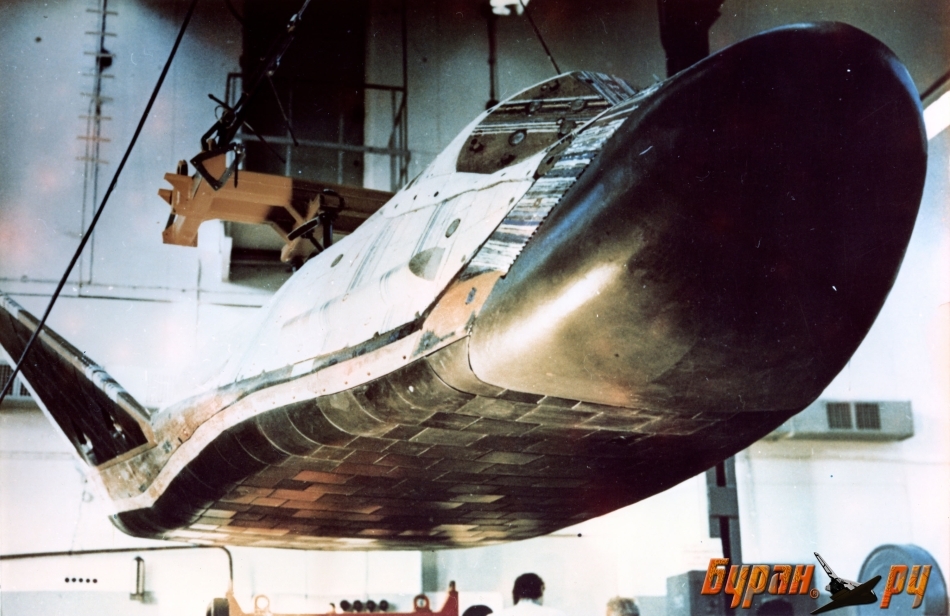
Characteristic thermal protection tiles are visible on the bottom surface.
But the time of the Spiral was already passing They did not develop a plane-propeller, and the orbiter was canceled for political reasons, because the top of the USSR Ministry of Defense wanted a “shuttle like the Americans”. Therefore, BOR-5 was already a reduced copy of Buran, and Spiral with EPOS was eventually closed.

The first part - tests BOR-2,3 second (color) - BOR-4:
Closed projects
The initial success of the Space Shuttle spawned some fashion for such ships. In Europe, in 1985, the HERMES project proposed back in 1975 was launched, which was to be launched on the Ariane 5 launch vehicle being developed at the same time. But, unlike the rocket, HERMES was closed in 1992.

"Skirt" in the tail section - an adapter to the large diameter of the central unit Ariane 5
In Japan, in the 80s they began to develop the HOPE-X shuttle. The program successfully completed two suborbital flights of technological demonstrators Hyflex and OREX, in 1997 the idea of a cargo vehicle modification arose that would help to cope with the then problems of supplying the ISS with space shuttles. But in 1998, the project severely cut the budget, and in 1999 they closed it altogether.
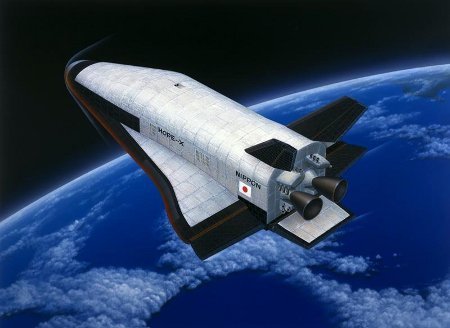
In Germany, in 1985, they began to develop their version of the Spiral, called Zenger. In 1991, the project even managed to create an engine that combines turbojet and direct-flow jet engines, which would ensure the project at least the supersonic speed of the propeller aircraft, but during the project audit it was calculated that the benefit of 10-30% compared to Ariane 5 justify the huge development costs. The project closed in 1995.
In Russia at the end of the 80s, the MAKS project was presented - the Multi-Purpose Aviation-Space System. In it, problems with the development of a complex hypersonic aircraft-propeller decided to circumvent the use of heavy aircraft An-225 "Mriya", or, according to other data, its even more lifting capacity. The project is not officially closed, at the beginning of the tenth, for example, there was news about the adaptation of the system to suborbital tourist flights, but there is no information about actively working.

And finally, in the second half of the 90s, work was carried out at RSC Energia, from which the Clipper ship project grew. Around 2006, the device was even considered as a promising replacement for the Soyuz and got into the concept of the development of manned cosmonautics. But in 2009, the project was closed, and Energia began to develop PTK NP, which is now called the Federation.

Mysterious China
We should also mention the reusable projects in China. On the Internet, sometimes there are new photos of various layouts of reusable devices, but because of the secrecy it is completely incomprehensible what these projects are and what their status is.
In 2007, there were photos of the layout of what could be the ship "Shenlong"
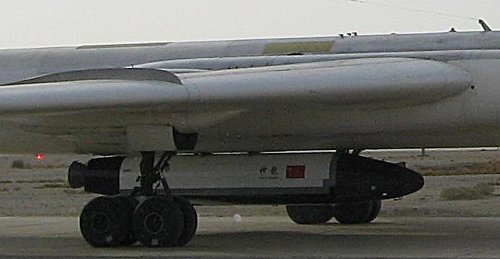
Other photos show some other projects.
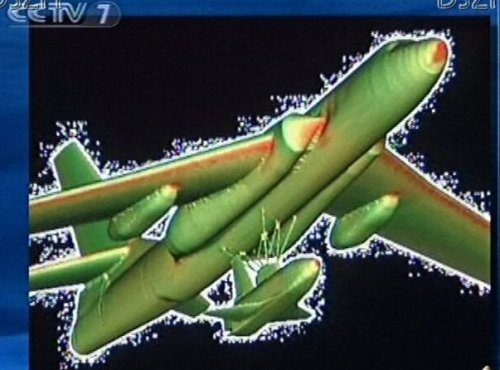

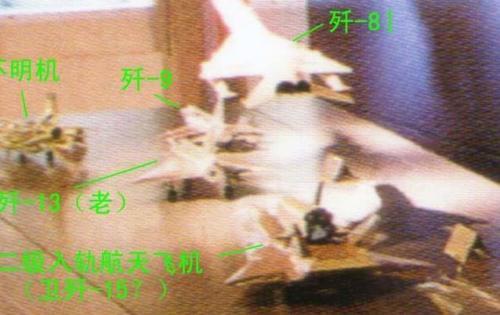


Orbital launches are now impossible to perform imperceptibly, so if any of the projects is in orbit, we will know about it. Although, of course, the characteristics and purpose of the device can remain a secret for a long time.
X-37

It is this situation, when the device flies in orbit, but we do not know its destination, it is happening now with the only mini-shuttle in service. Project X-37, launched in 1999, is now making its fourth flight. The unmanned vehicle, weighing about 5.5 tons, is in orbit all the longer. The first mission lasted 224 days, the second 469, the third 674, I would not be surprised if this time the device will stay in orbit for more than 800 days. Such an autonomous flight duration is possible, because in orbit the X-37 uncovers a solar battery from the cargo bay.
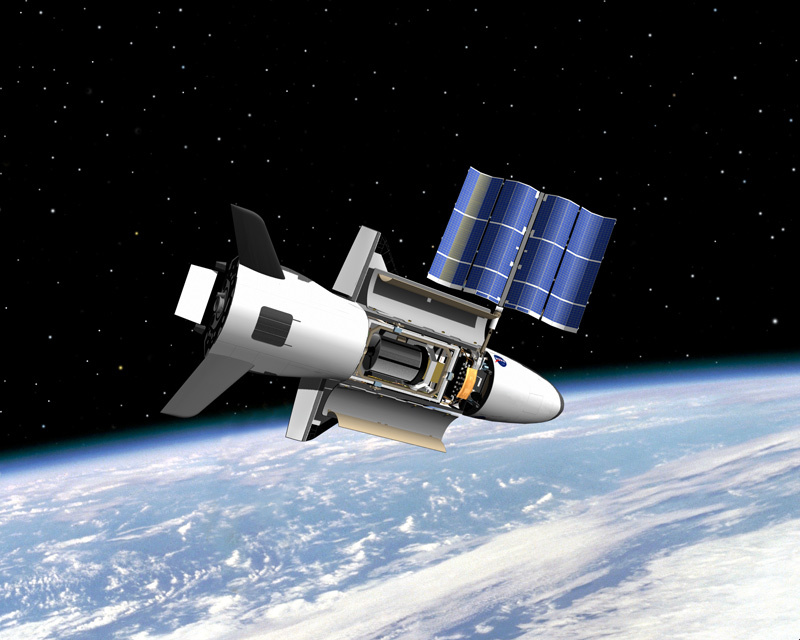
This time, the mission announced experiments with a new electrojet engine and the effects of space on various materials. The parameters of the orbit are not particularly suitable for reconnaissance satellite, a small inclination of 30-40 ° means that the device will not be able to monitor, for example, Russia, but it is impossible to reject the intelligence hypothesis, because its targets may be located near the equator. The satellite interceptor version cannot be disregarded either - despite the fact that the X-37 has not yet intercepted or destroyed anyone, it is constructively a maneuvering device that can approach its future targets. Amateur astronomers watched X-37 and even photographed it:

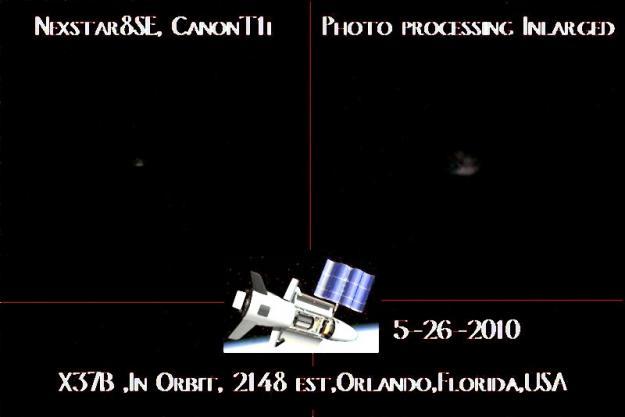
The higher class equipment is available to the military services controlling outer space in developed countries, but they will not share these photos with us. The cost-effectiveness of flying X-37 does not smell like anything at the moment, but due to secrecy we cannot tell about the successes or failures of the project.
IXV
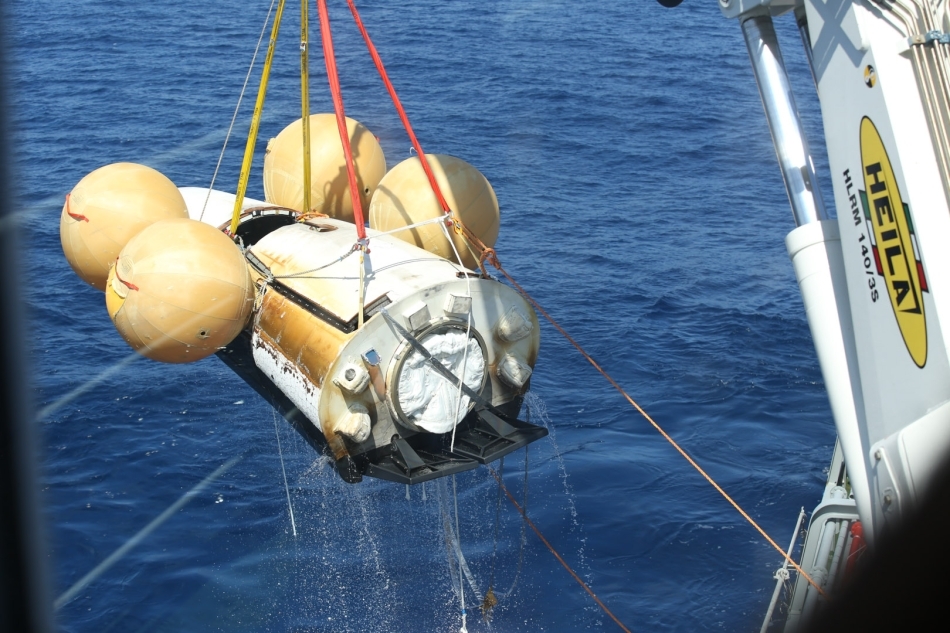
On February 11, 2015, the IXV technology demonstrator (Intermediate eXperimental Vehicle) was launched from the Kourou cosmodrome. The flight was successful, and, having entered the atmosphere at a speed of 7.5 km / s, typical for returning from a low near-earth orbit, the device successfully splashed down in the Pacific Ocean, flying less than one turn. Despite the absence of wings, the device was controlled when braking in the atmosphere. It is expected that another flight will take place in 2019-2020, most likely with a landing on land, and in the future from this project a reusable cargo ship may turn out.
RLV-TD

On May 23, 2016, India successfully launched a technology demonstrator RLV-TD (Reusable Launch Vehicle - Technology Demonstration - a technology demonstrator for a reusable launch system). The device rose by 60 km, and, having successfully flown 450 km, according to the test plan, it crashed against the water. In the future, the Indian space agency is going to conduct the following tests: landing, atmospheric flight, testing of a hypersonic engine, testing of the device at hypersonic speed. As a result, ISRO wants to get a way to reduce the cost of putting a kilogram into orbit due to reusability.
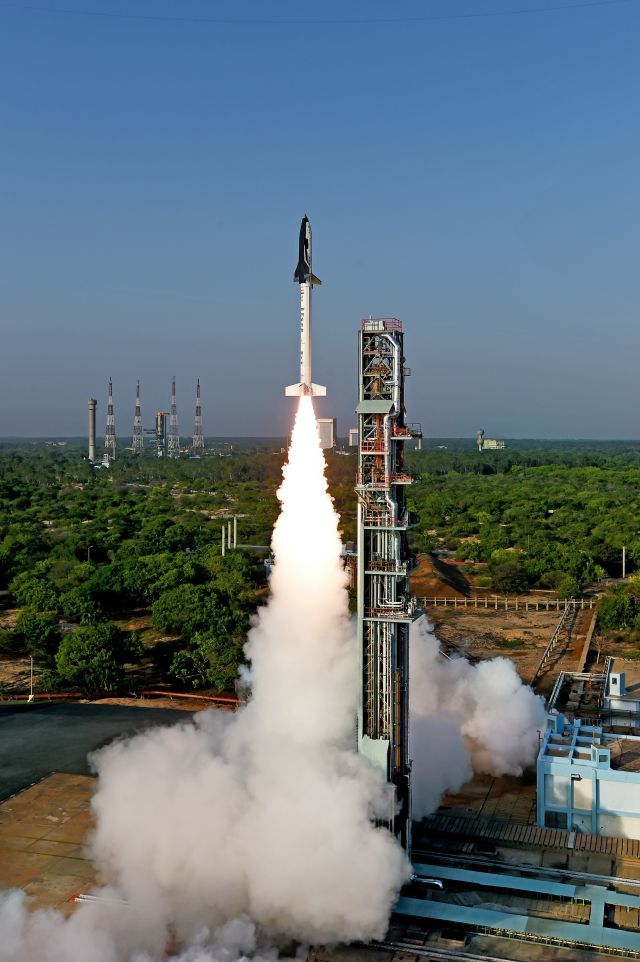
Dream chaser

Developed by Sierra Nevada, the shuttle Dream Chaser (“Running for a Dream”) has not gone beyond the troposphere, but despite the fact that he lost in the competition for manned private spacecraft to deliver astronauts to the ISS, the project is not finished. The fact is that at the beginning of 2016, he won the competition for flights to the ISS in the cargo version. NASA guarantees that the ship will receive six missions for delivering cargo to the ISS from 2019. We are waiting for news about new tests, which are sure to be needed
Test planning and landing. One rack of the chassis did not come out, the device was damaged.
Skylon

And this device is still in a low stage of technical readiness. It is being developed to implement the complex concept of Single Stage To Orbit (one step into orbit) and requires the development of a special engine that will liquefy oxygen from the air. So far, there is no news about the engine test assembly, so in the coming years the project will not fly exactly.
Conclusion
The idea of a mini-shuttle is attractive because it can realize the following advantages:
- Lower cost of creation and inter-flight service than the "big" shuttle.
- Managed accurate fit.
- Low overload when braking in the atmosphere (1.5-3 g).
- More frequent flights.
At the same time, like any reusable system, mini-shuttles are very dependent on the accuracy of cost estimation and the duration of inter-flight service, which can make them economically unprofitable. Also, the problems of reusable vehicles include the small size of the fleet, which increases the sensitivity to accidents.
Some pictures are taken from the site Buran.ru , there is a lot of interesting information on reusable systems.
Source: https://habr.com/ru/post/394487/
All Articles